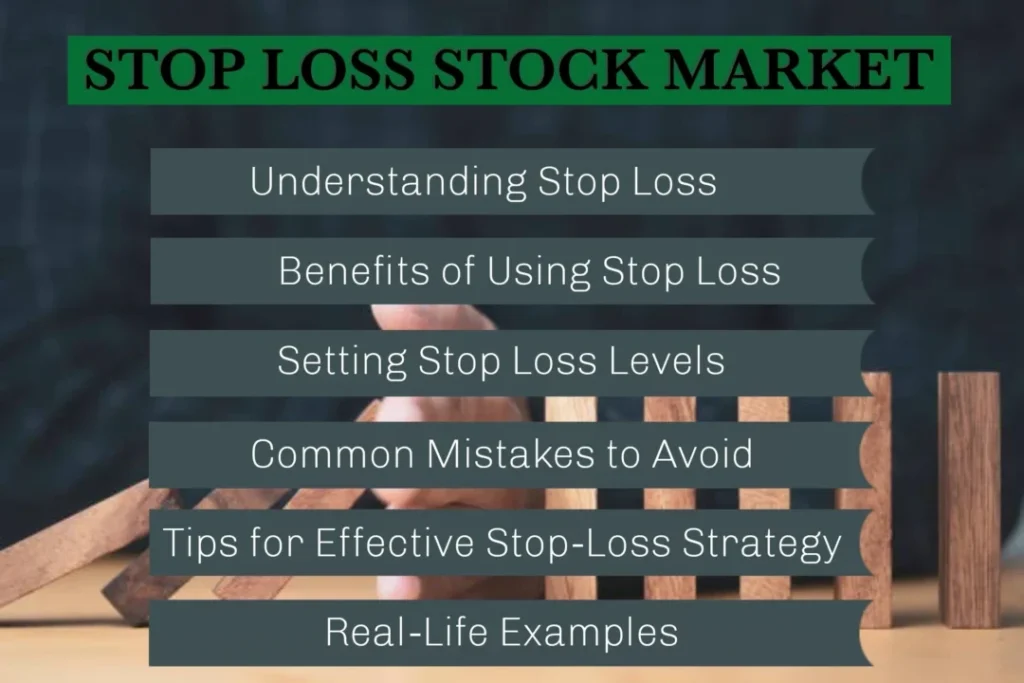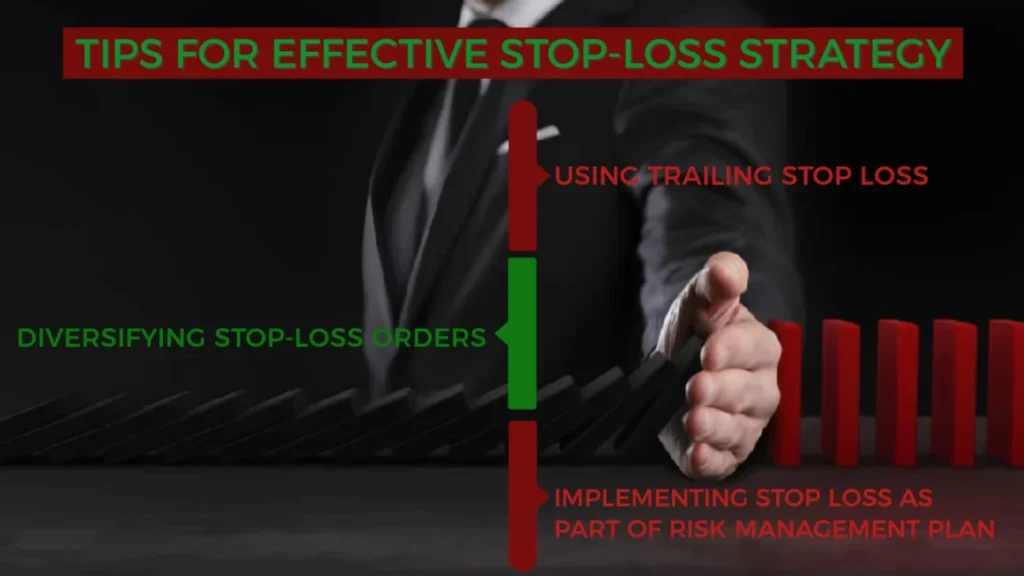Stop Loss In the stock market, one term that frequently surfaces is “stop loss. “ It’s not just jargon but a critical tool that every trader and investor should have in their arsenal. In this article, we delve deep into the concept of stop loss, its significance, and how it can be effectively utilized to safeguard investments and enhance profitability.
Introduction
Stop loss is a predefined price level set by traders or investors to limit their losses on a security position. It serves as a protective mechanism, automatically triggering a sell order when the stock price hits a specified threshold. Essentially, it helps mitigate the risk of substantial losses in volatile market conditions, ensuring that losses are contained within acceptable limits.
Stop Loss Stock Market
Understanding Stop Loss Stock Market

Definition and Purpose
At its core, stop-loss is about risk management. It allows traders to control their downside exposure by exiting a position before losses escalate beyond a certain point. By setting a stop-loss order, investors establish a predetermined exit strategy, safeguarding their capital against adverse market movements.
Types of Stop-Loss Orders
There are various types of stop-loss orders, including market, limit, and trailing stop orders. Each type offers unique advantages and can be tailored to suit individual trading preferences and risk tolerance.
How Stop Loss Helps Manage Risk
Stop-loss acts as a safety net, preventing catastrophic losses that could potentially wipe out a significant portion of an investment portfolio. By minimizing losses at an early stage, traders can safeguard their capital and invest it in more promising opportunities, leading to the maximization of overall returns.
Benefits of Using Stop Loss
Protection Against Market Volatility
In turbulent market conditions, prices can fluctuate wildly, leading to rapid erosion of capital. Stop loss helps mitigate this volatility by providing a predetermined exit point, shielding investors from sudden downturns.
Preventing Emotional Trading Decisions
Emotions often cloud judgment, causing traders to deviate from their original strategies and make impulsive decisions. Stop loss eliminates this emotional bias by enforcing discipline and ensuring that trading decisions are based on rational analysis rather than fear or greed.
Maintaining Discipline in Trading Strategies
Consistency is key to long-term success in trading. Stop-loss instills discipline by enforcing adherence to predefined risk parameters, thereby preventing impulsive deviations from the established trading plan.
Setting Stop Loss Levels
Factors to Consider When Setting Stop Loss
Effective stop-loss placement requires careful consideration of various factors, including volatility, support and resistance levels, and overall market sentiment. By analyzing these variables, traders can determine optimal stop-loss levels that balance risk and reward.
Technical Analysis Indicators for Stop Loss Placement
Technical indicators such as moving averages, trend lines, and Fibonacci retracements can provide valuable insights into potential price movements, aiding in the identification of suitable stop-loss levels.
Adjusting Stop Loss Based on Market Conditions
Market conditions are dynamic, and stop-loss levels should be adjusted accordingly. Traders should regularly review and update their stop-loss orders to reflect changes in volatility, price trends, and other relevant factors.
Common Mistakes to Avoid
Setting Stop Loss Too Close to Entry Point
Placing stop-loss orders too close to the entry point increases the likelihood of premature exits, depriving traders of the opportunity to ride out minor price fluctuations and capitalize on long-term trends.
Ignoring Market Trends and Indicators
Failing to consider prevailing market trends and technical indicators when setting stop-loss levels can result in suboptimal outcomes. Traders should conduct thorough analysis and incorporate relevant information into their decision-making process.
Not Reviewing and Adjusting stop-loss levels regularly
Market conditions evolve over time, and stop-loss levels that were once appropriate may no longer be effective. Traders should regularly reassess their positions and adjust stop-loss orders as needed to align with current market dynamics.
Tips for Effective Stop-Loss Strategy

Using Trailing Stop Loss
Trailing stop loss allow traders to lock in profits while letting winners run. By adjusting the stop-loss level as the price moves in favor of the trade, traders can maximize gains while minimizing potential losses.
Diversifying Stop-Loss Orders
Diversifying stop-loss orders across multiple positions and asset classes can help spread risk and mitigate the impact of adverse market movements on the overall portfolio.
Implementing Stop Loss as Part of Risk Management Plan
Stop-loss should be an integral component of a comprehensive risk management plan. By incorporating stop-loss strategies into their overall trading framework, investors can safeguard their capital and preserve long-term wealth.
Real-Life Examples
Case Studies of Successful Stop-Loss Implementation
Several real-life examples illustrate the effectiveness of stopping loss in preserving capital and minimizing losses during market downturns. By studying these cases, traders can gain valuable insights into best practices for stop-loss implementation.
Lessons Learned from Stop Loss Strategies
Analyzing past performance and identifying key takeaways can help traders refine their stop-loss strategies and improve future decision-making. Learning from both successes and failures is essential for continuous improvement in trading proficiency.
Conclusion
In conclusion, stop-loss is a vital risk management tool that every trader and investor should incorporate into their trading strategies. By setting predefined exit points, traders can mitigate losses, maintain discipline, and enhance overall profitability. Remember, successful trading is not just about maximizing gains but also about minimizing losses. So, next time you enter a trade, don’t forget to set your stop loss.
- FAQs
A stop-loss order is a predetermined price level set by traders to limit their losses on a security position.
Stop loss helps manage risk by providing a predefined exit point, thereby preventing losses from escalating beyond acceptable limits.
Yes, stop-loss levels should be adjusted regularly to reflect changes in volatility, price trends, and other relevant factors.
Yes, stop loss orders can be placed on stocks, options, futures, and other types of securities.
While stop-loss can help mitigate losses, it is not foolproof and may sometimes result in premature exits, especially in highly volatile markets.
